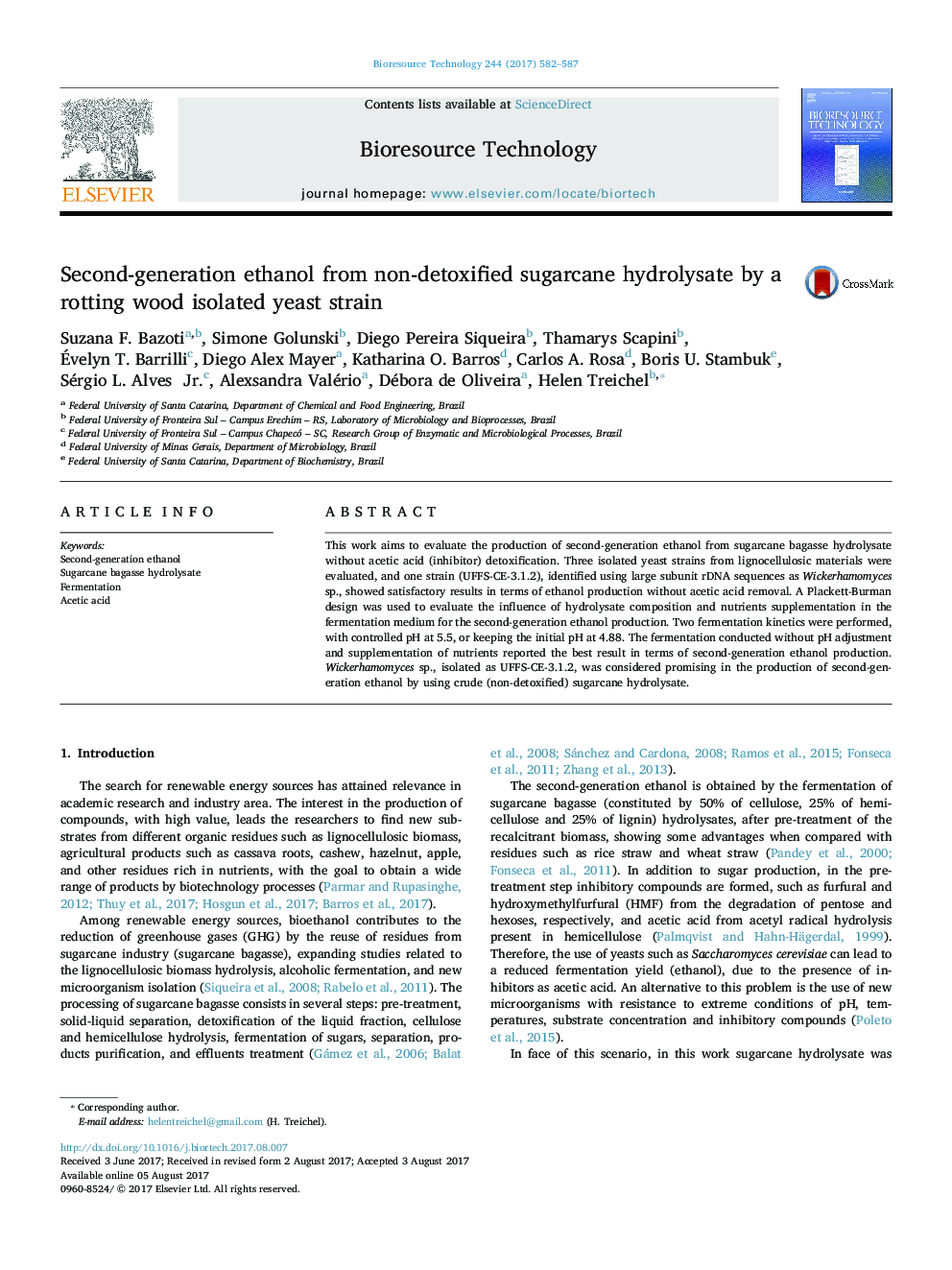| Article ID | Journal | Published Year | Pages | File Type |
|---|---|---|---|---|
| 4996583 | Bioresource Technology | 2017 | 6 Pages |
â¢Use of a nontreated sugarcane hydrolysate.â¢Use of rotting wood newly isolated yeast strain.â¢Viable production of second-generation ethanol.
This work aims to evaluate the production of second-generation ethanol from sugarcane bagasse hydrolysate without acetic acid (inhibitor) detoxification. Three isolated yeast strains from lignocellulosic materials were evaluated, and one strain (UFFS-CE-3.1.2), identified using large subunit rDNA sequences as Wickerhamomyces sp., showed satisfactory results in terms of ethanol production without acetic acid removal. A Plackett-Burman design was used to evaluate the influence of hydrolysate composition and nutrients supplementation in the fermentation medium for the second-generation ethanol production. Two fermentation kinetics were performed, with controlled pH at 5.5, or keeping the initial pH at 4.88. The fermentation conducted without pH adjustment and supplementation of nutrients reported the best result in terms of second-generation ethanol production. Wickerhamomyces sp., isolated as UFFS-CE-3.1.2, was considered promising in the production of second-generation ethanol by using crude (non-detoxified) sugarcane hydrolysate.
